This week’s newsletter is all about starting a knitting/crochet business. Many of us love the fiber arts as a hobby, but some may want to venture into turning their hobby into a business. I have stepped back from selling my work as my current schedule doesn’t allow me a lot of free time to create (and the way I was doing it wasn’t quite profitable.) So when someone suggested this as a topic for Nap Time, I jumped at the opportunity to ask some of my favorite artists for their thoughts. I asked them all the same 5 questions with hopes that their answers can give some insight to any of you who are thinking of doing a similar thing. Some are selling their actual pieces, some sell patterns and some do a combination! I hope you enjoy :)
First up, Le Pull.
One of my favorite fiber artists! I am a sucker for stripes and I love the way she styles her knits in her outfits.
Firstly, let us know about your current brand- how does it work? (ex: custom orders / commissions / monthly drops / creating and selling patterns)
I’m not really a brand, I’m first and foremost a knitwear designer and my work is essentially based on pattern sales. In the future, I plan to open a website where I can sell the designs I knit but don’t wear, as well as my patterns. When I create a new design, I create it for myself and in my size, but as I end up spending a lot of time at home and in loungewear, I’d prefer it to benefit people who will have more opportunities than me to wear them.
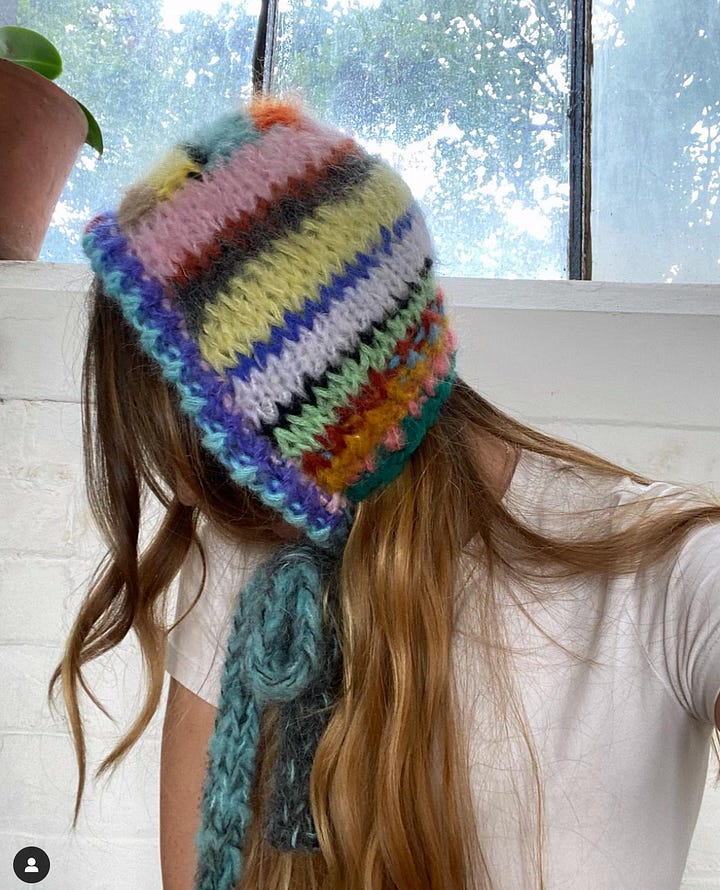
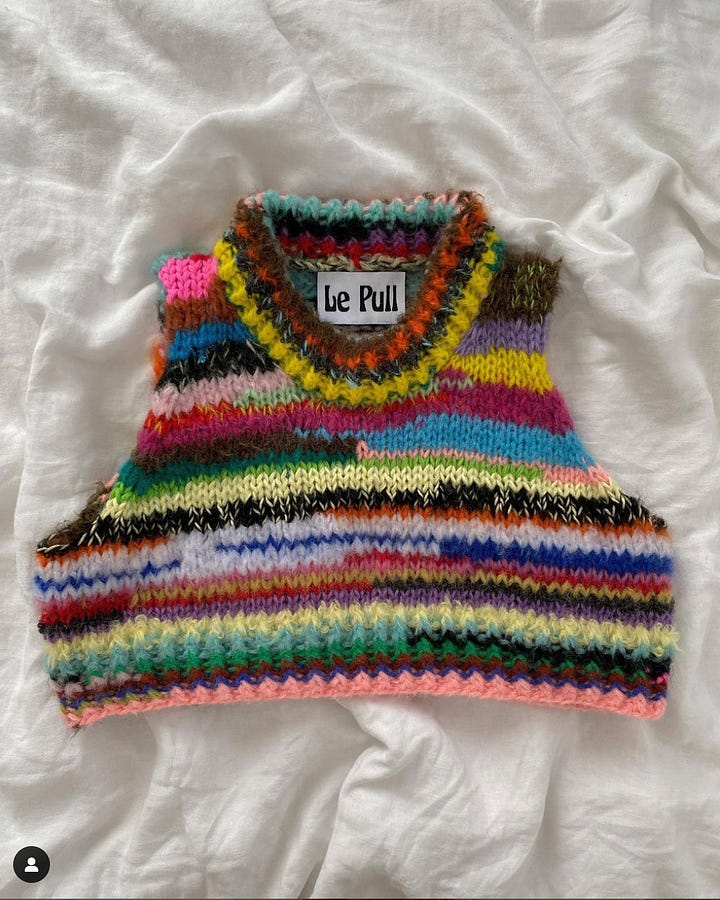
Is this your full-time job or more of a side project?
This is my full-time job for 2 years and I’m grateful for that.
How do you figure out how to price your items?
I don’t sell finished products. But when I do, I’ll calculate prices according to the time spent and the cost of yarns. As far as pattern prices are concerned, it’s the same principle: long and difficult patterns are sold at a higher price than others, in proportion to the time I spent on them.
What do you think is the hardest part of running a knitting business?
Although life as a designer is great and rewarding but it’s not all rest and relaxation. The hardest thing about working alone is having to do everything at once (Instagram, taking photos, knitting, writing patterns, answering emails, managing collabs...). For me, the hardest part is that this work takes up a lot of space and encroaches a little too much on my private life. I never really have vacations or weekends off. Of course, I could relax a bit. But today we’re surrounded by social networks and as an « influencer » I have to keep up a steady pace of publication so that the algorithm keeps me in a good position on Instagram, which is very annoying.
What advice would you give someone who wants to try to start a knitting/crochet business?
Explore knitting and crochet techniques to find your own style. Have a recognizable identity and above all be determined and not afraid of hard work. Stay true to yourself and use the social media to promote yourself.
You can browse and shop Le Pull’s patterns here.
Next up: Sea the Moonlight.
This has been an account that I have followed since the beginning days of knitting. Annie’s intricate designs and intricate color work are so impressive. I’ve always admired her transparency in terms of her experience running a knitting business and I’m excited to share some of her insights!
Firstly, let us know about your current brand- how does it work? (ex: custom orders / commissions / monthly drops / creating and selling patterns)
Over the years I’ve learnt that my creativity works best without boundaries, so I avoid commissions; I found having a time limit really makes me feel under pressure which makes me avoid working on them. So now I create what I feel when I feel and sell them when the time feels right. Usually, I work up a collection that drops around once every 2 months.
Is this your full-time job or more of a side project?
I work seasonally in summer for around 3 months which makes up a bulk of my yearly wage. The rest of the year I work full time on my fibre business.
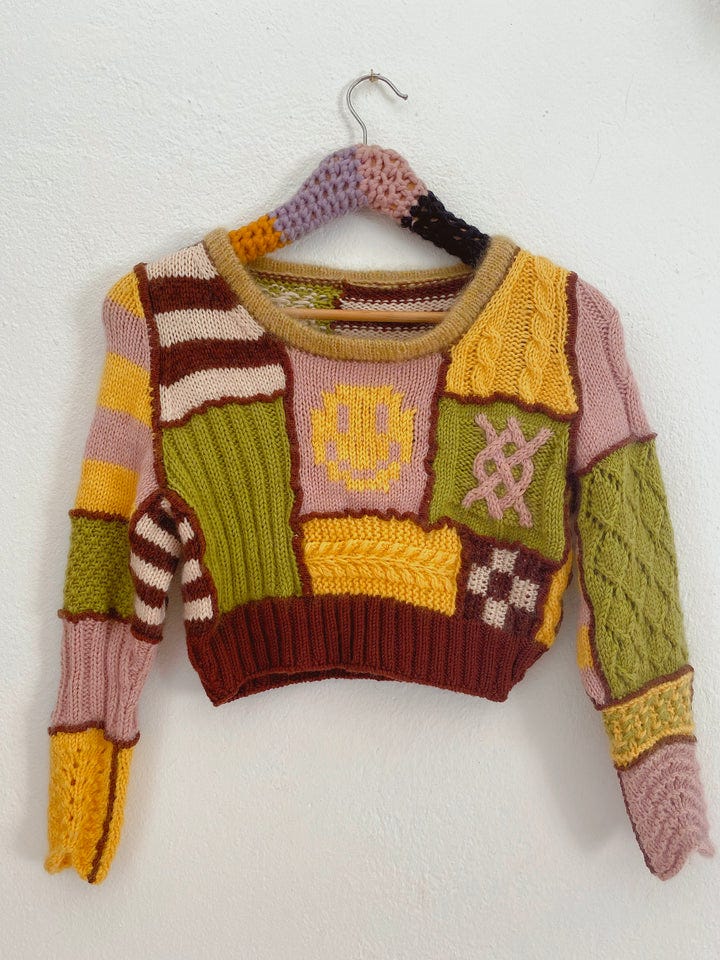
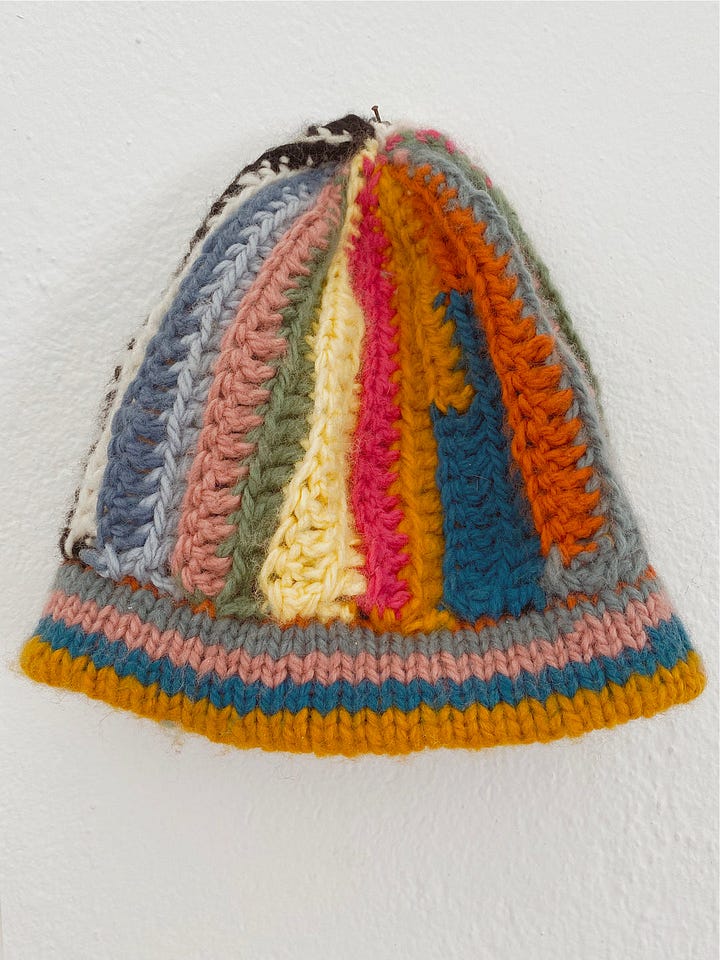
How do you figure out how to price your items?
I add up the time the piece took me to create plus the cost of the materials. Giving myself around £10 per hour which I should really increase!
Hardest part of running a knitting business?
I struggle to stop creating and get down to the selling. It can feel quite intimidating the amount of steps that have to be taken to get the work off the needles and into the hands of the customers; finding models and taking photographs, editing, writing descriptions, pricing, uploading to a website, answering emails, creating hand made labels, packing and posting parcels.
In the end, I usually enjoy the process, I’m so grateful for each and every order, knowing my makes have a home and place they will be loved and worn is heartwarming but putting down my knitting needles is the hardest part!
What advice would you give someone who wants to try to start a knitting/crochet business?
Personally, I don’t make huge amounts of profit, I know there are many ways too; learning to pattern write is high on my list but personally, I started this for the sheer love of it. I want to create because it feels good, I want to have total freedom with my choice of colours and textures. I want space to be a human, to rest, to take breaks, and to mess up. There is no right or wrong way to run a business, but get real with yourself about what you want to get out of it, you get to create your business to work for you, not the other way around.
You can shop Sea The Moonlight’s one-of-a-kind handmade pieces here
Next up is Loupy Studio
The queen of freestyle knitting and crochet, her unique and colorful pieces are sold as one-of-one pieces. She has been such an inspiration for me; browsing her page always gets me motivated to try a new project.
Firstly, let us know about your current brand- how does it work? (ex: custom orders / commissions / monthly drops / creating and selling patterns)
I just make pieces whenever I can, and every 2-2.5 months I do a drop of all those pieces. At the moment, I only have one [knitting] guide but as I am a bit of a “free-hander” making patterns doesn’t come too naturally to me.
Is this your full-time job or more of a side project?
This is my full-time job. I have been doing it full-time since last June. It’s been really going great. I was doing it part-time before that but it’s been so nice to be able to dedicate all my time to just knitting and crocheting.
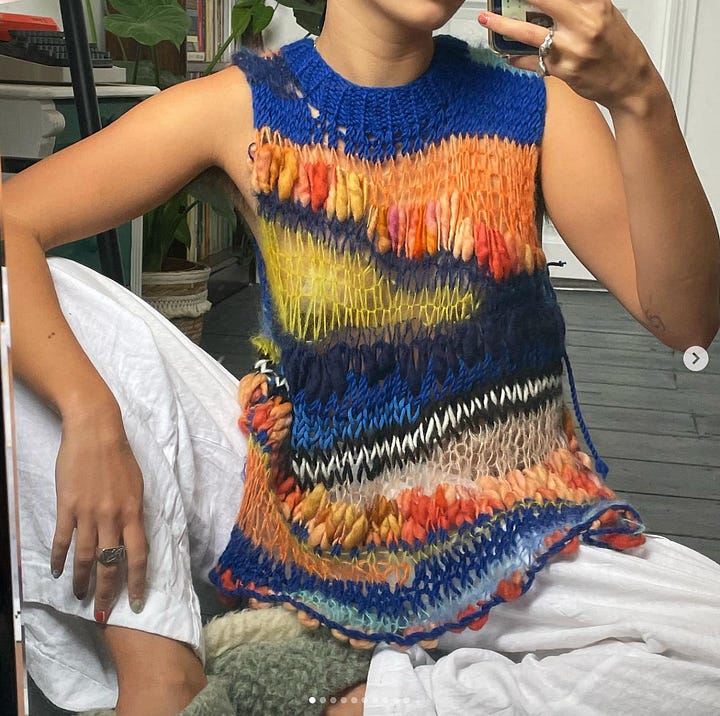
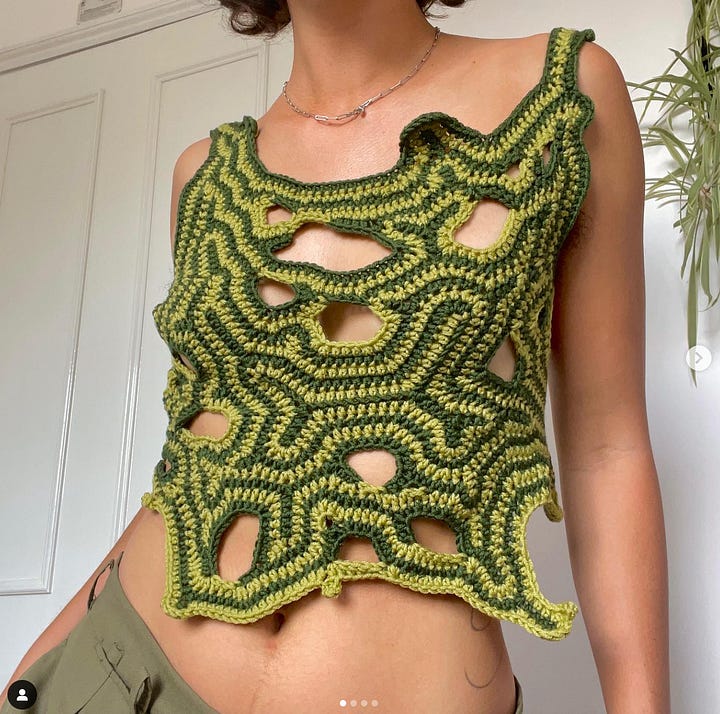
How do you figure out how to price your items?
I find this really hard. I would love for my items to be accessibly priced and wouldn’t want my customers to feel like it’s too precious to wear- I want them to feel like it’s a wearable art piece. And so at the moment, I just barely pay myself a minimum wage plus the cost of the materials. So I barely pay myself about 10£ an hour. And that doesn’t count the hours spent designing, photographing, planning, posting, or listing it online. So… its a bit tricky. I think I will try to up my prices a little more but I find it very tricky and very stressful. Because you don’t want to run the risk of not being able to sell anything and not being able to pay rent.
What do you think is the hardest part of running a knitting business?
The hardest part is trying not to be too stressed about relying on Instagram for business and just being able to focus on the process of knitting. Because that is really what I want to do. It’s not having a “brand” or even a public profile for me, more of a way of being able to fund a full-time knitting habit. So sometimes it’s just hard to separate the actual making from the stress of worrying about if Instagram is going to “shadow ban” a post or things like that, which I think anyone who has a public profile on Instagram can feel.
What advice would you give someone who wants to try to start a knitting/crochet business?
I’d really just focus on doing what you love. I know that sounds like a cliche. But I wouldn’t try to go into it thinking that it would be a business. Just would try to focus on learning your skills and being excited about making new pieces and doing whatever comes naturally. And if people want to buy what you make- then great! I didn’t end up selling my pieces until the demand was so high that it felt so silly having a massive stockpile of knits in my room. So, it really wasn’t a business-minded start at all!
You can shop Loupy Studio’s pieces here.
I want to thank these lovely artists for taking the time to answer these questions; I have admired all their work for so long! After reading all their responses together, I can definitely relate to the many points they made. I think pricing is always tricky- you want your items to be accessible to all but you also need to pay yourself accurately. The love for the craft is palpable with all these artists; you can see it in their work. Not only are they making beautiful, wearable art, they are inspiring many other people. That is the wonderful part of the internet- if you can try not to compare yourself to others, you can really spend time getting inspired and excited to create new things. All over the world, people are making amazing pieces of art with their hands. I love thinking about that.
I wonder if there is a way to create a truly profitable fiber art business without losing quality or your passion for creating. It seems like we’re all figuring it out at the same time.
What about you guys? Have any of you ventured into the world of selling your art? What are your thoughts? Would love to hear them all!
Thank you for reading and for being a part of this amazing community!
Till next time!

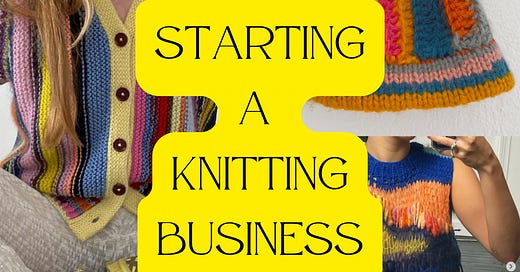





This is great! And it comes at a perfect time for me, as I’m seriously considering starting selling knitting patterns! Yay!!
Wow thank you for writing this! I’m following them as well and it’s nice to know more about their creative journey! I find it really hard as well to price items. Thank you for the inspiration, it feels like it’s possible to live from your creations, just have to find a good balance 🌞🫶🏽